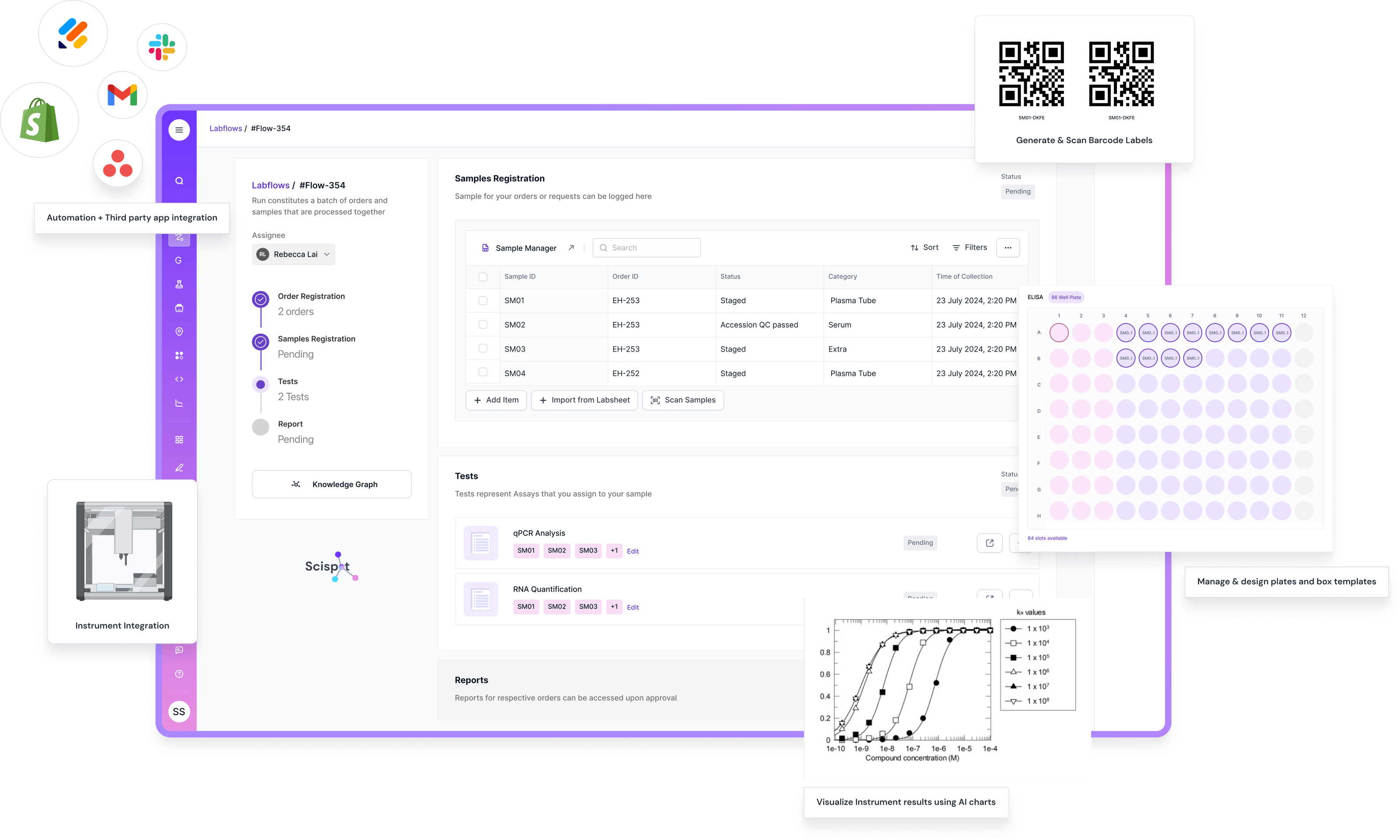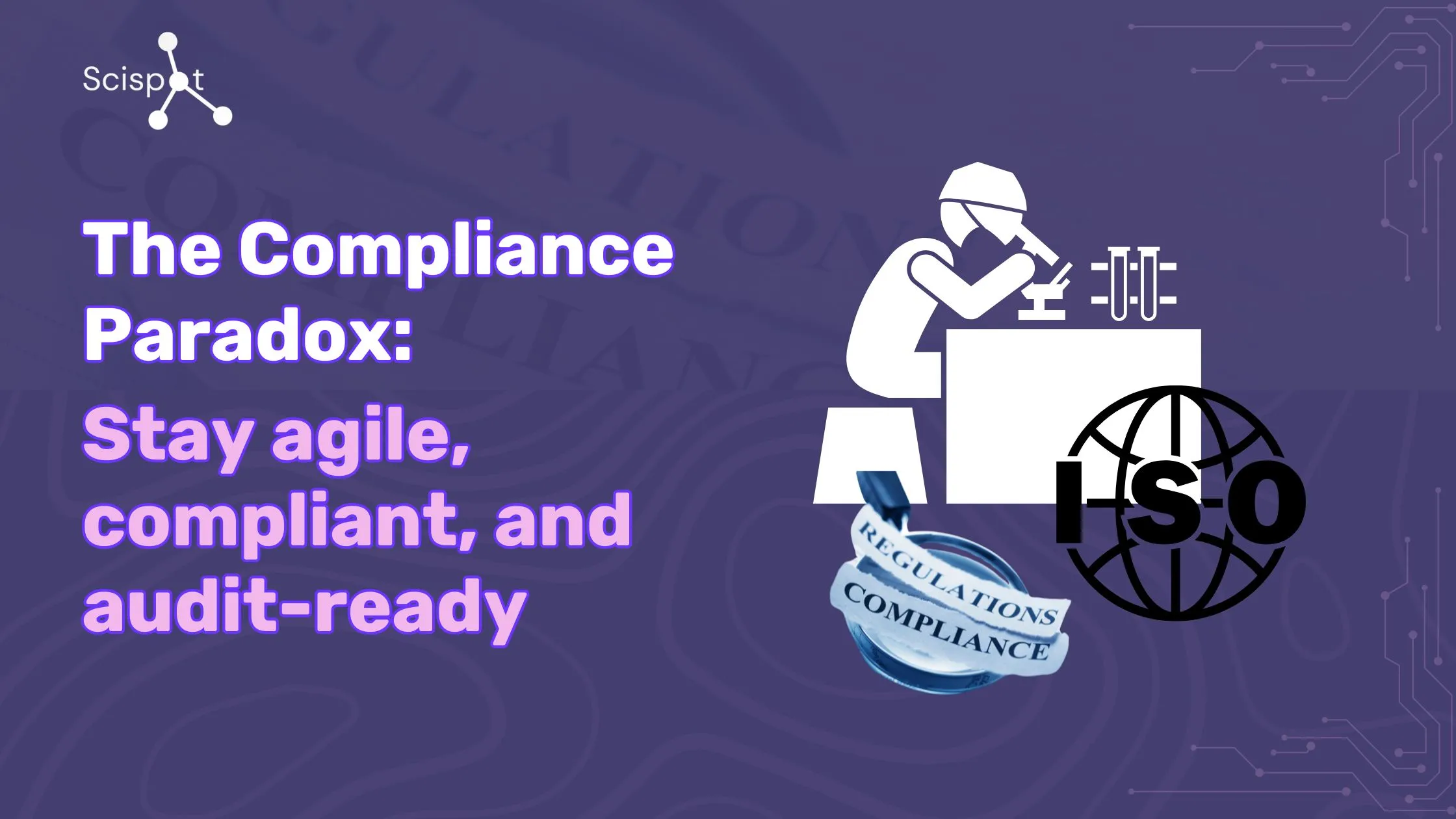Introduction
In the lab world, there’s a paradox: you want agility, innovation, speed—but you also must satisfy regulations, audits, audits, and more audits. It’s like driving a sports car while towing a trailer full of legal documents. The tension feels real. But it doesn’t have to slow you down. If you build controls by design, make compliance part of how you operate, not a bolt‑on project, you actually gain speed, trust, and scale. In this article, I talk about how labs can remain agile while meeting stringent standards like 21 CFR Part 11 and ISO 15189, and how Scispot offers a platform that makes this possible.

Principles That Keep You Moving
At the heart of compliance lies data integrity. Concepts like ALCOA+ (Attributable, Legible, Contemporaneous, Original, Accurate, plus Complete, Consistent, Enduring, Available) guide us. They sound technical, but they really mean: make sure every record can be traced to who did what, when, and how; make sure it’s legible, accurate, unchanged; make sure it lasts; make sure you can get it when you need it. Compliance also demands access controls, versioning, electronic signatures, change logs, documented workflows, and validation. For example, 21 CFR Part 11 defines that electronic records and signatures must be just as trustworthy as paper ones—with audit trails, access controls, and system validation. ISO 15189 sets requirements for medical labs’ management and technical competence—personnel, equipment calibration, testing, and result reliability. When you build systems that embed these principles, you don’t trade speed for compliance—you achieve both.
.jpeg)
How Scispot Helps You Stay Both Agile and Compliant
Scispot was built with regulation in mind from the beginning. You get typed capture, full audit trails, electronic signatures, and versioning baked into your workflows. You don’t bolt compliance on at the end—you design your workflows so that every click, every capture, every sign‑off is compliant by default. This means fewer surprises during inspection, fewer manual spreadsheets to piece together, and more time for science instead of paperwork. For change control, every workflow version is tracked; for user actions, roles and permissions govern exactly who can do what; for records, everything is timestamped and immutable. When you choose Scispot, you’re selecting a platform that acknowledges the compliance burden and turns it into a competitive advantage.

The Evidence Kit You Should Build
In preparation for audits and inspections, you want your evidence kit ready: requirement trace matrix, test scripts + results, change history, training records, deviation logs. Having these videos, logs, and documents ready is the difference between an audit taking days and an audit taking hours. In a platform like Scispot, you don’t compile from ten systems—you query one system that already has this built in. That means faster inspections, lower legal risk, audit fatigue goes down, and your team can sleep a bit better.
Staying Agile While Compliant: Tips from the Field
- Embed controls in the platform so scientists don’t feel boxed in—they feel supported.
- Automate evidence generation so that audits feel routine and boring—not scary.
- Version everything so that when a process changes, you still have the older versions intact.
- Monitor key compliance KPIs: number of deviations, time to closure, training completion, and audit findings.
- Culture matters: if the team sees compliance as enabling rather than restricting, you’ll move faster.

Conclusion
The compliance paradox doesn’t have to be a drag on innovation. It can actually become an accelerator. When you select a platform that embeds controls by design, gives you traceability and audit readiness, and supports fast workflows, you get the best of both worlds. With Scispot, you don’t have to choose between being agile and being compliant—you can be both.





.webp)
.webp)
.webp)



